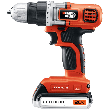Giving Your Roof a Checkup
Written by Lee Wyatt (last updated April 29, 2019)
Everyone knows, or at least should know, that it is a really good idea to conduct a complete and thorough inspection of your roof whenever the season changes. In addition to this, you should also conduct a periodic checkup. Whether this is monthly, or every other month is up to you, but it really should be done. Giving your roof a checkup isn't all that difficult, and can end up saving you the headache and hassle of having to deal with seriously damaged roof. What's even better is that if you do it the right way, you should only spend no more than an hour looking at your roof.
- Discoloration. Visually inspect your roof for any signs of major discoloration in the shingles or other roofing material. If the discoloration is found in conjunction with one of these other trouble spots, then you may need to prepare yourself to call the Significant discoloration can be an indicator that your roof needs a closer look, or a more thorough inspection.
- Check the ridge. Look along side the ridge of your roofline. The ridge of the roof is one of the first places that trouble can really start to show up. In fact, shingles that are placed along the ridgeline typically fail first, and usually take the brunt of the damage brought about from the weather. Part of the reason why you really want to keep an eye on the ridge line is that if a leak forms there, it can literally end up anywhere in the house.
- Valleys. Just as the highest point of your roof, the ridge, can be one of the most troubling places, so too can the lowest point. The valleys of your roof (if you have them) are usually found between two ridges, or where the roof changes direction. In bad weather these are the areas that help to channel the direction of travel for water that runs off of the roof. As you can imagine, this leads to erosion, and over time this can make even the toughest of materials wear away.
- Flashing. The flashing is another possible weak point in your roof, and one that should be looked at. Ideally flashing should be free from any sign of rust, tight to the roof itself, and sealed with either roofing cement or even a pliable caulking. If the flashing doesn't have this then you have a potential problem.
Author Bio
Lee Wyatt
Contributor of numerous Tips.Net articles, Lee Wyatt is quickly becoming a regular "Jack of all trades." He is currently an independent contractor specializing in writing and editing. Contact him today for all of your writing and editing needs! Click here to contact. Learn more about Lee...
Steam Cleaning Your Car
Steam cleaning your car's engine is a great way to get it perfectly clean if you know what to look for prior to using ...
Discover More
Staying on Top of Paperwork
Perhaps one of the most difficult things to accomplish at work is getting ahead on your paperwork, and staying there. For ...
Discover More
Choosing the Best Compost Mix for Your Garden
If you are interested in doing any kind of gardening, you will eventually need some fertilizer. One of the best ways to ...
Discover More
More Home Improvement Tips
Roofing Equipment
If you are planning on doing any type of roofing work then you need to know what equipment to use. Roofing equipment ...
Discover More
What is Roof Flashing?
What is roof flashing? Unless you have done a bit of roofing work in the past, or simply like to read a lot, chances are ...
Discover More
Replacing Wood Shingles
Wood shingles are a great looking roofing material that has a tendency to get damaged during storms. Luckily replacing ...
Discover More

Comments